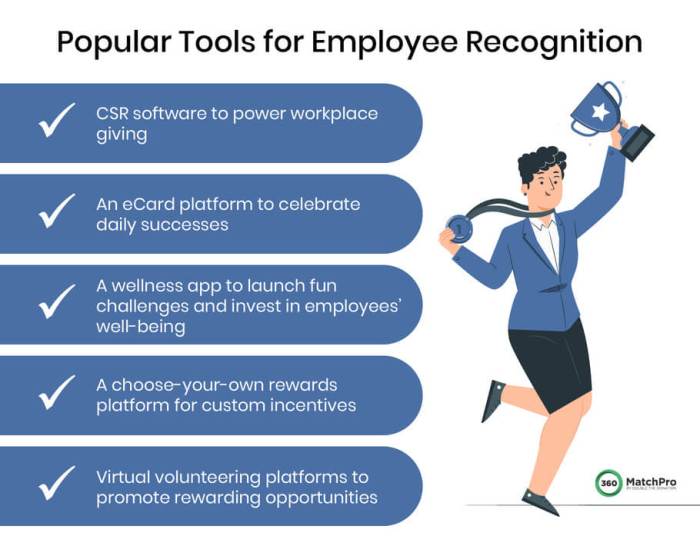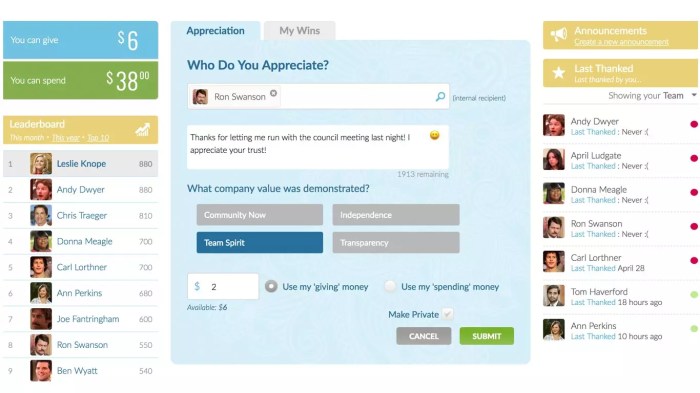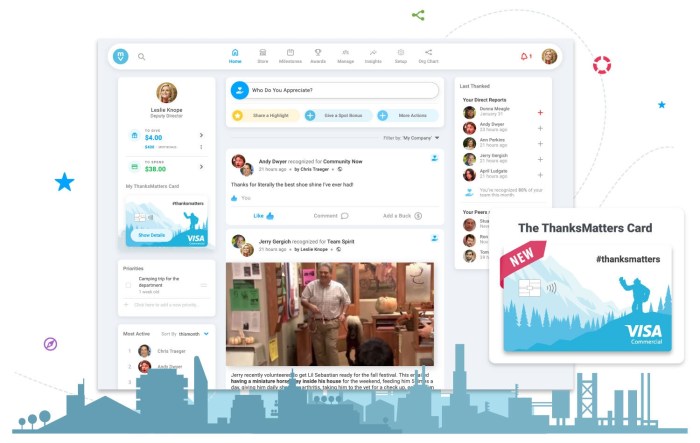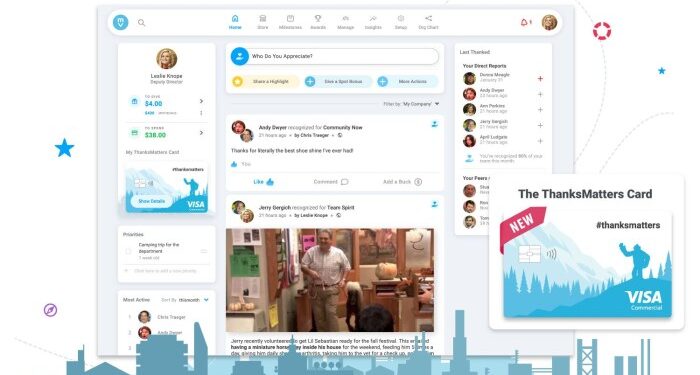As user-friendly remote employee recognition tools take the spotlight, this introductory passage invites readers into a realm of knowledge and innovation, promising a captivating exploration ahead.
Delve into the realm of user-friendly remote employee recognition tools, where virtual engagement meets seamless experiences for employees across different landscapes.
Importance of User-Friendly Remote Employee Recognition Tools

Remote work has become increasingly common, making it vital for companies to implement effective employee recognition programs even in virtual environments. User-friendly remote employee recognition tools play a crucial role in ensuring that employees feel valued, motivated, and engaged.
Enhanced Employee Engagement
By providing user-friendly tools for employee recognition, organizations can make the process seamless and accessible to all team members, regardless of their physical location. This level of accessibility fosters a sense of inclusion and belonging among remote employees, encouraging them to actively participate in recognition programs.
Positive Impact on Employee Experience
When employees can easily use recognition tools, they are more likely to engage with the platform, give and receive recognition, and feel appreciated for their contributions. This positive experience contributes to higher levels of job satisfaction, improved morale, and a stronger sense of connection with the organization, even from a distance.
Key Features to Look for in User-Friendly Remote Employee Recognition Tools

When choosing user-friendly remote employee recognition tools, there are key features to consider that can enhance the overall experience for both employees and managers. These features can make the process of recognizing and appreciating remote team members more seamless and effective.
Intuitive User Interface
An essential feature of user-friendly remote employee recognition tools is an intuitive user interface. The tool should be easy to navigate, with clear instructions and simple design elements that make it effortless for users to understand how to use the platform.
A clean and organized interface can enhance user experience and encourage more frequent engagement with the tool.
Customization Options
Another important feature to look for in user-friendly remote employee recognition tools is customization options. Different teams may have unique preferences and cultures, so the ability to customize recognition programs to align with specific values and goals is crucial. Customization options can include personalized messages, branded templates, and tailored reward options, allowing managers to create a more personalized and meaningful recognition experience for remote employees.
Real-Time Feedback and Alerts
User-friendly remote employee recognition tools should also offer real-time feedback and alerts to keep employees and managers informed about recognition activities. Instant notifications for achievements, milestones, or appreciations can create a sense of immediacy and excitement, boosting morale and motivation among remote team members.
This feature can help foster a culture of continuous recognition and appreciation within the virtual workspace.
Integration with Communication Platforms
Seamless integration with existing communication platforms is another key feature that enhances the user-friendliness of remote employee recognition tools. Integration with tools like Slack, Microsoft Teams, or email platforms can streamline the recognition process by allowing managers to send acknowledgments directly through familiar channels.
This integration can also improve visibility and accessibility, ensuring that recognition efforts are easily accessible and not overlooked by team members.
Reporting and Analytics
Lastly, user-friendly remote employee recognition tools should provide robust reporting and analytics features to track the impact and effectiveness of recognition programs. Detailed reports on recognition activities, engagement levels, and performance metrics can help managers evaluate the success of their initiatives and make data-driven decisions to improve employee morale and motivation.
This feature is essential for assessing the ROI of recognition efforts and continuously optimizing the remote recognition process for better results.
Implementation Strategies for User-Friendly Remote Employee Recognition Tools

Implementing user-friendly remote employee recognition tools can significantly boost morale and productivity among remote workers. Here is a step-by-step guide on how to introduce these tools to your remote workforce effectively.
Introducing User-Friendly Tools to Remote Workforce
- Start by clearly communicating the purpose and benefits of the new recognition tools to all remote employees.
- Provide training sessions or tutorials to familiarize employees with the features and functionalities of the tools.
- Encourage a culture of appreciation and recognition within the organization to motivate employees to use the tools regularly.
- Solicit feedback from employees and make necessary adjustments to improve user experience.
Best Practices for Training Employees on Using Recognition Tools
- Offer comprehensive training sessions that cover all aspects of the user-friendly tools, including how to give and receive recognition.
- Provide access to user guides, FAQs, and support resources for employees to refer to when needed.
- Encourage peer-to-peer learning and recognition to foster a sense of community and engagement among remote employees.
- Monitor employee usage and offer additional training or support to those who may be struggling to use the tools effectively.
Tips for Ensuring High Adoption Rates of User-Friendly Recognition Tools
- Lead by example by actively using the tools to recognize and appreciate remote employees yourself.
- Incorporate recognition into regular team meetings or communications to make it a natural part of the remote work environment.
- Incentivize employees to use the tools by offering rewards or recognition for consistent and meaningful recognition efforts.
- Celebrate successes and milestones achieved through the use of the recognition tools to highlight their impact on employee morale and engagement.
Measuring Success and ROI of User-Friendly Remote Employee Recognition Tools

Employee recognition is a vital aspect of maintaining a positive work culture, especially in remote teams. Measuring the success and return on investment (ROI) of user-friendly remote employee recognition tools is essential to ensure their effectiveness in boosting morale and productivity.
Designing Metrics for Evaluating Effectiveness
When evaluating the effectiveness of user-friendly remote employee recognition tools, it is crucial to design specific metrics that align with the goals of the organization. Some key metrics to consider include:
- Participation Rate: Measure the percentage of employees actively engaging with the recognition tools.
- Feedback Quality: Evaluate the feedback received from employees to assess the impact of recognition on their morale.
- Retention Rate: Monitor the retention rate of employees after the implementation of the recognition tools.
- Productivity Levels: Analyze any changes in productivity levels post-implementation.
Significance of Tracking ROI
Tracking the ROI of user-friendly remote employee recognition tools is crucial for demonstrating the value they bring to the organization. By measuring the ROI, companies can:
- Quantify the impact of recognition on employee engagement and satisfaction.
- Identify areas where improvements can be made to optimize the effectiveness of the tools.
- Align recognition efforts with business objectives and goals.
- Justify the investment in employee recognition to stakeholders and decision-makers.
Role of Feedback Mechanisms
Feedback mechanisms play a vital role in the continuous improvement of user-friendly remote employee recognition tools. By gathering feedback from employees, organizations can:
- Identify what aspects of the tools are working well and which areas need improvement.
- Implement changes based on employee suggestions to enhance the user experience.
- Ensure that the recognition tools remain relevant and effective in meeting the needs of remote teams.
- Encourage ongoing participation and engagement with the tools.
End of Discussion
In conclusion, user-friendly remote employee recognition tools pave the way for enhanced virtual interactions, fostering a culture of appreciation and connection in the digital workspace.
Quick FAQs
What are the benefits of using user-friendly remote employee recognition tools?
User-friendly tools enhance employee engagement, satisfaction, and overall experience in a virtual environment. They make recognition more seamless and accessible to remote teams.
How can customization options in user-friendly tools benefit diverse remote teams?
Customization options allow remote teams to tailor recognition programs to fit their unique needs and preferences, promoting inclusivity and personalization.
What metrics can be used to measure the success of user-friendly remote employee recognition tools?
Metrics like employee morale, participation rates, and feedback can gauge the effectiveness of these tools in boosting employee satisfaction and motivation.






![What is IT Project Management? [2023] • Asana](https://business.mardinata.com/wp-content/uploads/2025/10/project-management-industries-120x86.jpg)




